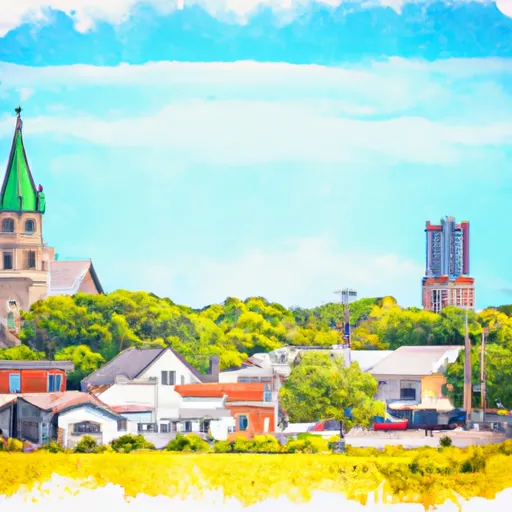°F
°F
mph
Windspeed
%
Humidity











Ringsted, Iowa is a small town located in Emmet County. The climate in Ringsted is characterized by warm summers and cold winters. Summers are typically mild, with average temperatures ranging from the low 70s to the high 80s Fahrenheit. Winters are cold, with average temperatures ranging from the low 10s to the high 20s Fahrenheit. Precipitation is evenly distributed throughout the year, with an average annual rainfall of around 30 inches.
The hydrology constituents in Ringsted are primarily influenced by the nearby Des Moines River. The river provides a source of water for the region and supports various aquatic ecosystems. Additionally, several small ponds and lakes can be found in the area, offering fishing and boating opportunities.
For outdoor recreation, Ringsted is surrounded by picturesque natural landscapes. The nearby McIntosh Woods State Park is a popular destination, offering activities such as hiking, camping, and picnicking. The state park also has a beach area where visitors can enjoy swimming and sunbathing during the summer months. Overall, Ringsted provides a peaceful environment for outdoor enthusiasts to explore nature and engage in various recreational activities.
Weather Forecast
Ringsted receives approximately 798mm of rain per year, with humidity levels near 83% and air temperatures averaging around 8°C. Ringsted has a plant hardyness factor of 5, meaning plants and agriculture in this region thrive during a short period during spring and early summer. Most plants will die off during the colder winter months.
Regional Streamflow Levels
28
Cubic Feet Per Second
6
Cubic Feet Per Second
149
Cubic Feet Per Second
27
Cubic Feet Per Second
Nearby Camping
| Camping Area | Reservations | Toilets | Showers |
|---|---|---|---|
| Flandrau State Park | |||
| Fort Ridgely State Park | |||
| Lake Hanska County Park | |||
| Truman City Park | |||
| Watona City Park | |||
| Clear Lake Co Park |



